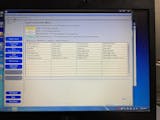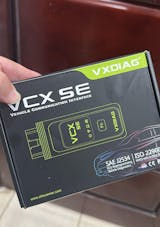JLR SDD V165 節氣門體適配:綜合指南
捷豹和路虎車輛需要定期進行診斷調整以確保最佳性能。關鍵的調整是節氣門體的適應,特別是在進行維修或更換零件時。如果您正在使用 捷豹路虎SDD V165,您可能想知道如何有效地執行此任務。
節氣門體適配允許引擎的節氣門重置到正確的打開和關閉位置,從而優化引擎的氣流。這篇部落格文章將指導您使用 JLR SDD V165 軟體執行節氣門體適配。我們還將解決常見問題並提供故障排除解決方案。
什麼是節氣門體自適應?
節氣門體適應過程確保引擎獲得適當的氣流以保持最佳性能。它重置節氣門的打開和關閉位置,以及其他閥門,如廢氣再循環 (EGR) 閥和廢氣旁通閥(在渦輪增壓引擎中)。通常,在更換節氣門體等零件或 ECU 重新編程後需要執行此程序。
JLR SDD 軟體(尤其是 V165 版本)提供了一種透過空氣路徑設定程式執行節氣門體適配的直接方法。在此例行程序中,所有空氣截止閥均被重置,以確保關鍵引擎部件正常運作。
如何在 JLR SDD V165 中進行節氣門體適配
如果遵循以下步驟,使用 JLR SDD V165 軟體執行節氣門體調整非常簡單:
- 啟動車輛並讓引擎預熱。確保引擎溫度至少達到 10°C。
- 關閉車輛並在診斷設備上啟動 JLR SDD V165 軟體。
- 導航至 服務功能 > 建議 > 動力傳動系統 > 空氣路徑設定例程。
- 運行空氣路徑校準程序來重置節氣門、EGR 閥和廢氣旁通閥。
- 重新啟動引擎並再次執行該程式以完成適配。
完成流程後,您應該會收到診斷軟體的確認,確認節氣門體和相關閥門已成功重置。請記住清除調整後可能出現的任何診斷故障碼 (DTC)。
常見問題和故障排除提示
儘管該過程很簡單,但在 JLR SDD 軟體中執行節氣門體適配時您可能會遇到問題。以下是一些常見問題和解決方案:
- 問題: 引擎溫度未達到10°C。
解決方案: 確保車輛有足夠的時間預熱。在運行適應過程之前,您可能需要駕駛車輛或讓其空轉幾分鐘。 - 問題: 軟體中未找到空氣路徑設定例程。
解決方案: 確認您使用的是最新版本的 JLR SDD。如果仍然找不到該功能,請聯絡 VXDIAG 尋求技術支援。 - 問題: 適配完成後仍會出現DTC代碼。
解決方案: 執行完整的診斷掃描並清除所有持久性代碼。如有必要,請重新運轉節氣門體適配流程。
為什麼要使用 JLR SDD V165 進行節氣門體適配?
JLR SDD V165 軟體是捷豹和路虎汽車最新的診斷工具。它包括相容性、軟體穩定性和功能方面的改進,使其成為節氣門體適配等程式的理想選擇。此外,最新版本提供了用戶友好的介面,使技術人員可以輕鬆瀏覽系統。
當與 VXDIAG 設備等高品質診斷工具一起使用時,JLR SDD V165 會變得更加有效。 VXDIAG 的設備與多種車型相容,確保您可以存取所有必要的診斷功能,包括節氣門體適配。要了解有關兼容設備的更多信息,請訪問 vxdiag.com。










